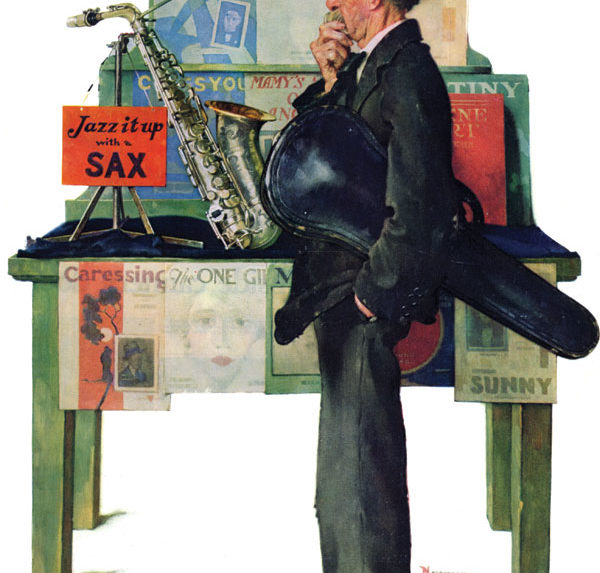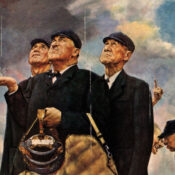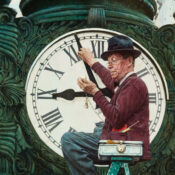James Kellogg Van Brunt, the pensive musician posing for the November 2, 1929, cover of the Post, was a gentleman about town and a good friend of Norman Rockwell’s. Van Brunt was more than just a model, though; he played a significant role in the creation of this painting, which traces its origin to an ocean voyage four months earlier.
After vacationing in Europe, Rockwell and his wife, Irene, were sailing home to New York along with their close friends, Fred and Edna Peck. While on board, Fred revealed some shocking news to Rockwell: He informed him that Irene wanted a new life with someone else—Fred’s own brother-in-law. Awkward!
A few days after arriving home, Rockwell retreated to the sanctuary of his studio and his work. However, once inside, he found it difficult to do anything but stand and stare, let alone be creative. After a week of producing very little, he sought counsel from his old friend Van Brunt. A veteran of two wars and 45 years Rockwell’s senior, Van Brunt was no stranger to grief; six years earlier, he had lost his wife of 52 years. As it turned out, Van Brunt’s advice was sound. He ordered Rockwell back to the studio: “Get to your easel and paint; it will all work out in the end!”
Rockwell not only took his “medicine,” he made Van Brunt his model. He knew that his friend was musically inclined, active in the community chorus and Boy Scouts, and had served as a drummer boy during the Civil War. Thus was born our Post cover illustration featuring the older musician pondering new beginnings. Notice the poignant sheet music titles clearly on display around him.
Rockwell incorporated another hidden message in the illustration—he was good at that. Look closely at the hatband and see if you can decipher the meaning of the three stylized letters so appropriate to the artist’s predicament.
[Give up? The letters are “WOU”—With Out You.]
Less than six months after the painting was published, Rockwell married a schoolteacher named Mary Barstow with whom he had three sons—Jarvis, Thomas, and Peter.
Become a Saturday Evening Post member and enjoy unlimited access. Subscribe now



